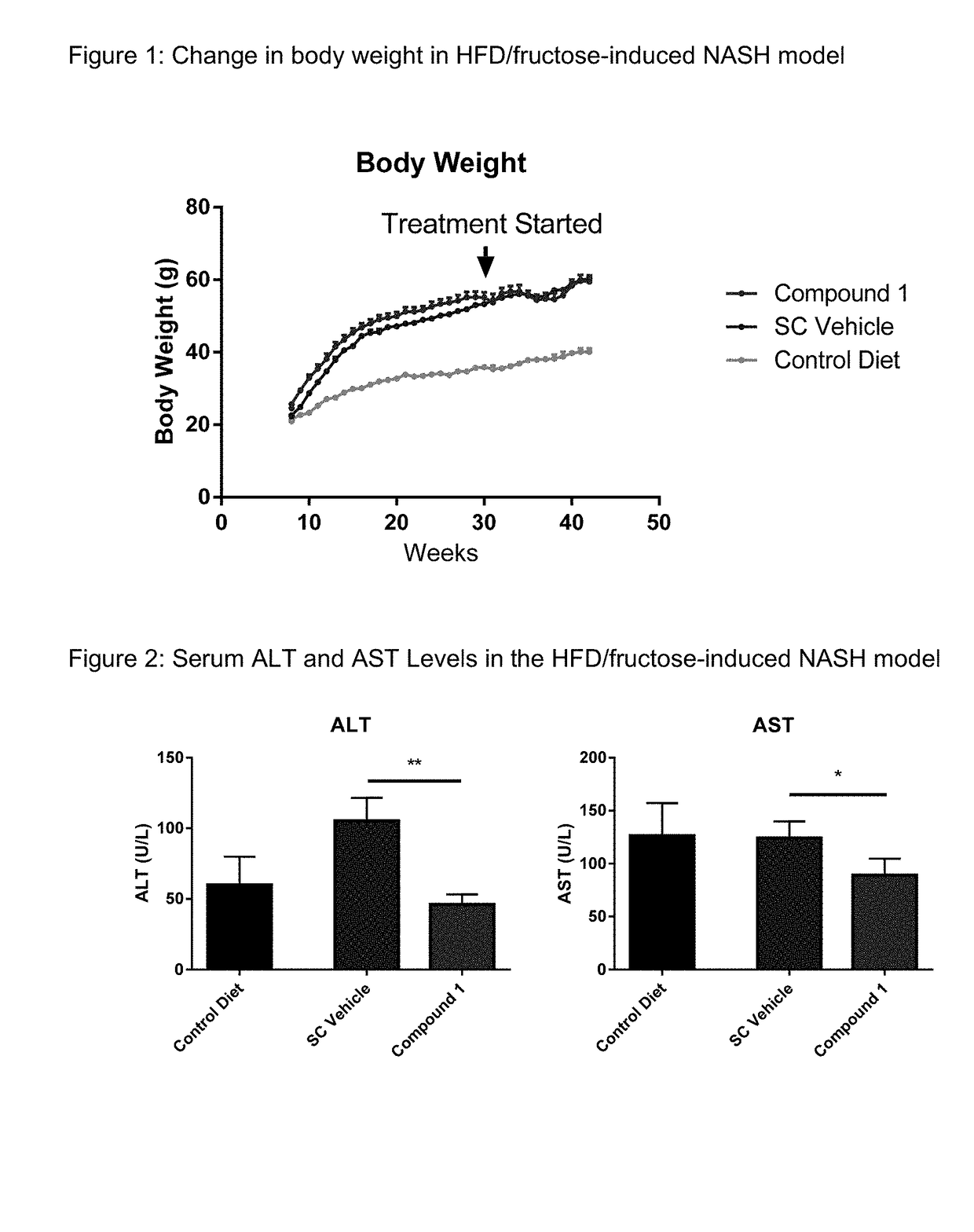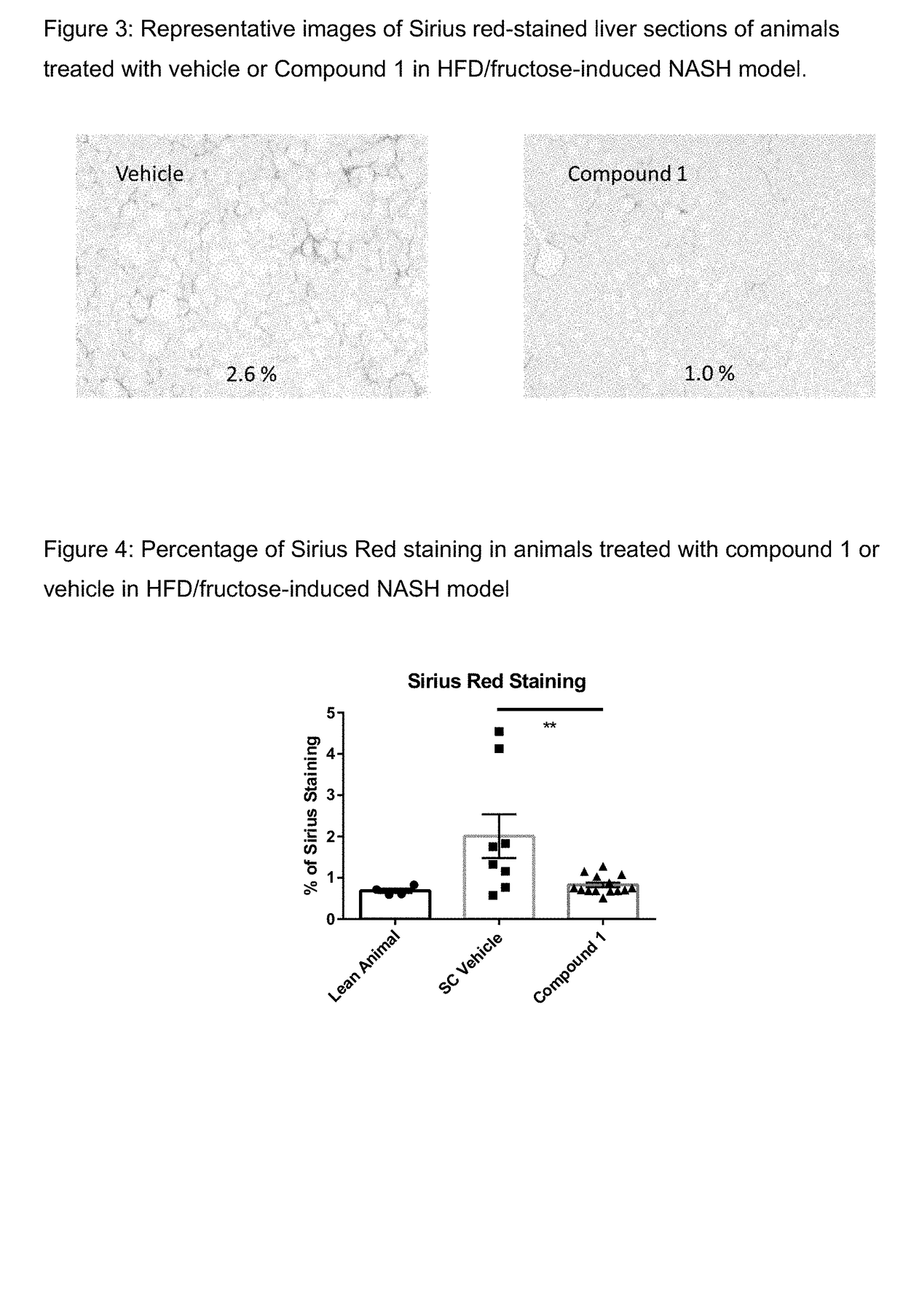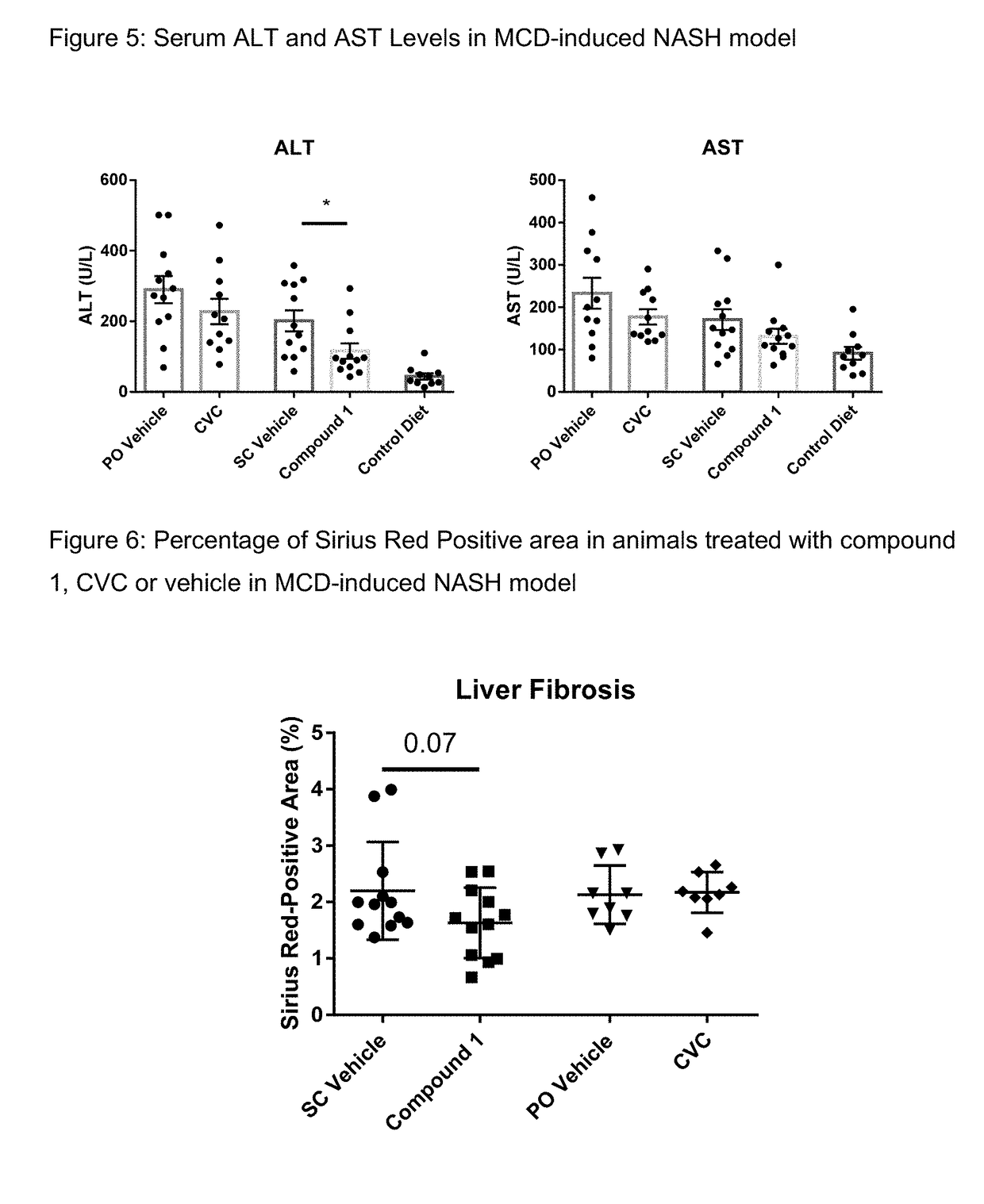Method of treating liver fibrosis
a liver fibrosis and fibrosis technology, applied in the field of liver fibrosis treatment, can solve problems such as complicating the health of someone with nash
- Summary
- Abstract
- Description
- Claims
- Application Information
AI Technical Summary
Benefits of technology
Problems solved by technology
Method used
Image
Examples
example 1
High Fat Diet (HFD) Induced NASH Model
[0168]Male wild-type (WT) mice C57BI / 6 were obtained from Jackson Laboratory and fed either with high-fat diet (D12492, 60 Cal % fat, Research Diets, New Brunswick, N.J.) with 30% fructose in the drink water or a lean control diet (D12450B, 10 Cal % fat, Research Diets) at 6-8 week of age and maintained on the respective diet for the duration of the study (16-32 weeks). Compound 1 was formulated as a solution in 1% hydroxypropyl methylcellulose (Sigma-Aldrich, St. Louis, USA). Mice were dosed subcutaneously once per day with 30 mg / kg of Compound 1 or vehicle for 8 weeks. As illustrated by FIG. 1, treatment with compound 1 did not change the body weight compared to vehicle. As shown in FIG. 2, Compound 1 reduced serum ALT and AST levels. Sirius red-staining was used to evaluate the severity of liver fibrosis. FIG. 3 shows representative images of Sirius red-stained liver sections of animals treated with Compound 1 or vehicle. FIG. 4 shows that tr...
example 2
Methionine-Choline Deficient (MCD) Induced NASH Model
[0169]Male wild-type (WT) mice C57B1 / 6 were obtained from Jackson Laboratory and fed either with MCD diet (MP Biomedicals, #960439) or a lean control diet at 8 week of age for 8 weeks. Compound 1 was formulated as a solution in 1% hydroxypropyl methylcellulose (Sigma-Aldrich, St. Louis, USA). Mice were dosed subcutaneously once per day with 30 mg / kg Compound 1 or vehicle for 8 weeks. Compound 1 was administered subcutaneously to maintain high systemic levels. The CVC compound (cenicriviroc) was formulated as a solution in 1% hydroxypropyl methylcellulose, and tested at 30 mg / kg orally. For both compound 1 and CVC, trough drug level was over IC50. FIG. 5 shows that compound 1 significantly reduces serum ALT levels whereas CVC does not. FIG. 6 shows that compound 1 reduces Sirius red-positive staining and, therefore, liver fibrosis, whereas CVC does not.
example 3
Histopathological Analysis
[0170]Formalin-fixed, paraffin-embedded liver sections were stained separately with hematoxylin & eosin (H&E) and for Sirius red Picrosirius red (#365548, Sigma) and evaluated for severity of liver fibrosis. All pathologic evaluations were made by a pathologist on a random and blinded basis. Collagen surface density was quantified using Image J (NIH). Two Sirius red-stained slides per animal were taken at different depth, with 18 images taken randomly per slide for a total of 36 images per animal for collagen quantification.
PUM
| Property | Measurement | Unit |
|---|---|---|
| time | aaaaa | aaaaa |
| time | aaaaa | aaaaa |
| time | aaaaa | aaaaa |
Abstract
Description
Claims
Application Information
 Login to View More
Login to View More - R&D
- Intellectual Property
- Life Sciences
- Materials
- Tech Scout
- Unparalleled Data Quality
- Higher Quality Content
- 60% Fewer Hallucinations
Browse by: Latest US Patents, China's latest patents, Technical Efficacy Thesaurus, Application Domain, Technology Topic, Popular Technical Reports.
© 2025 PatSnap. All rights reserved.Legal|Privacy policy|Modern Slavery Act Transparency Statement|Sitemap|About US| Contact US: help@patsnap.com



